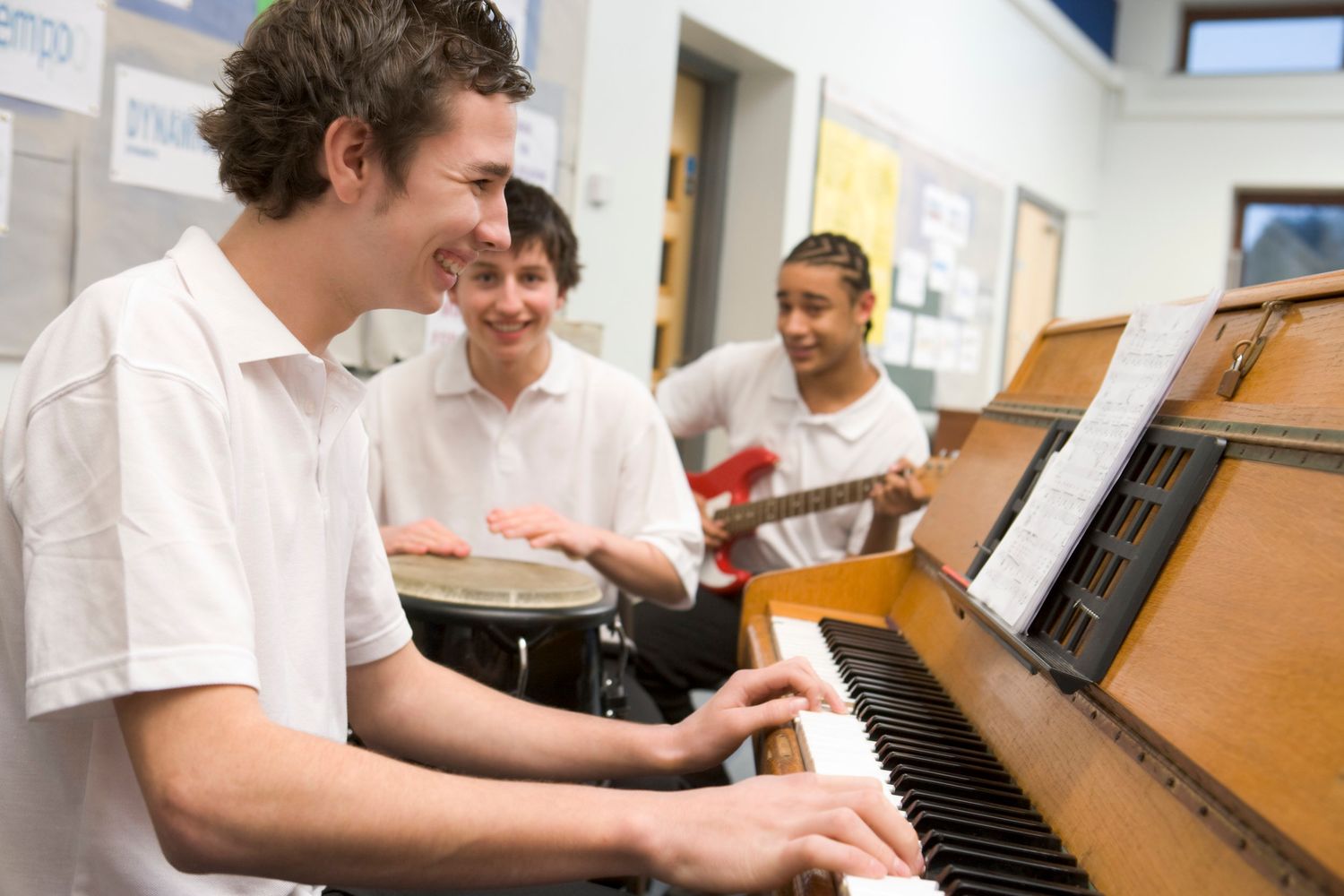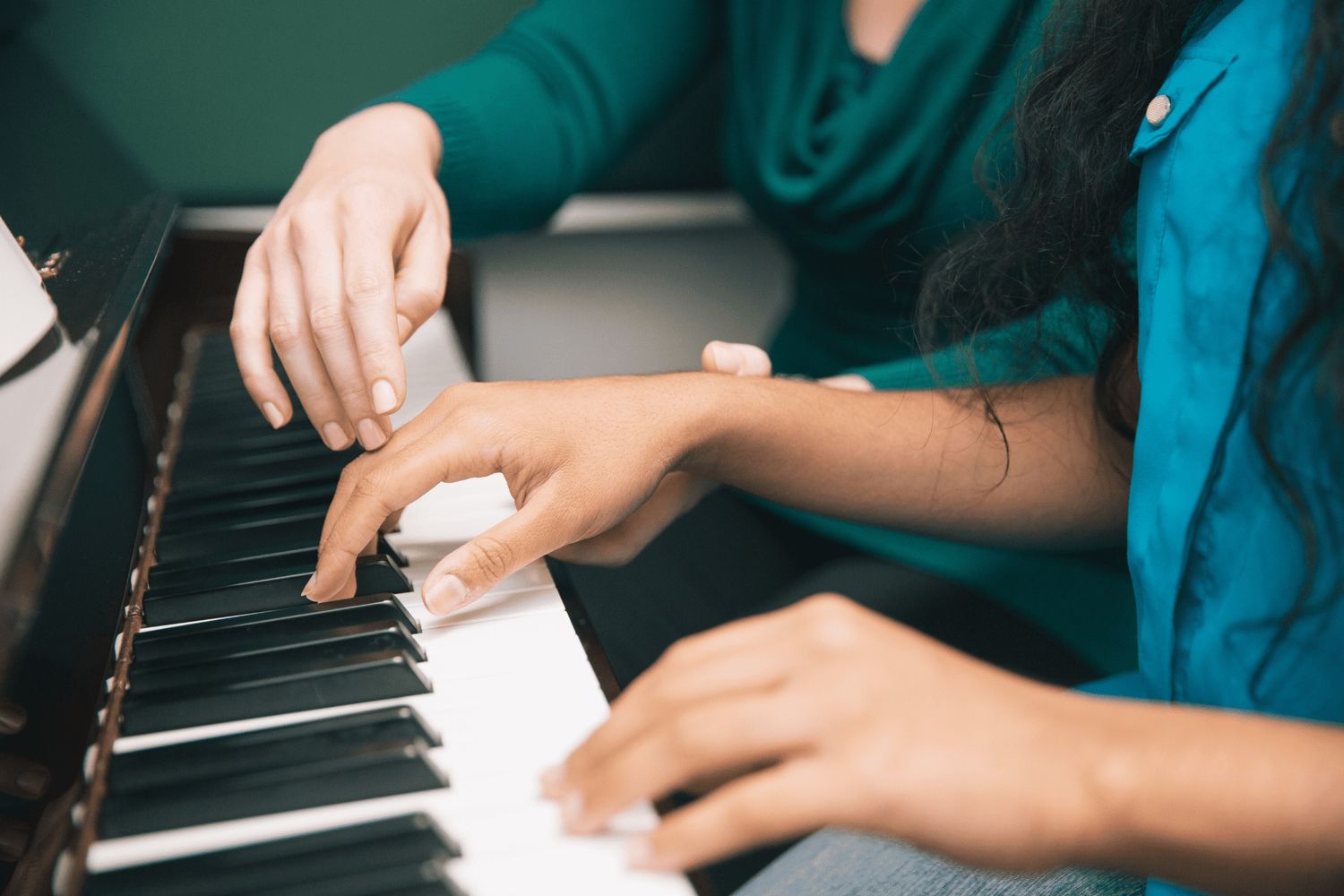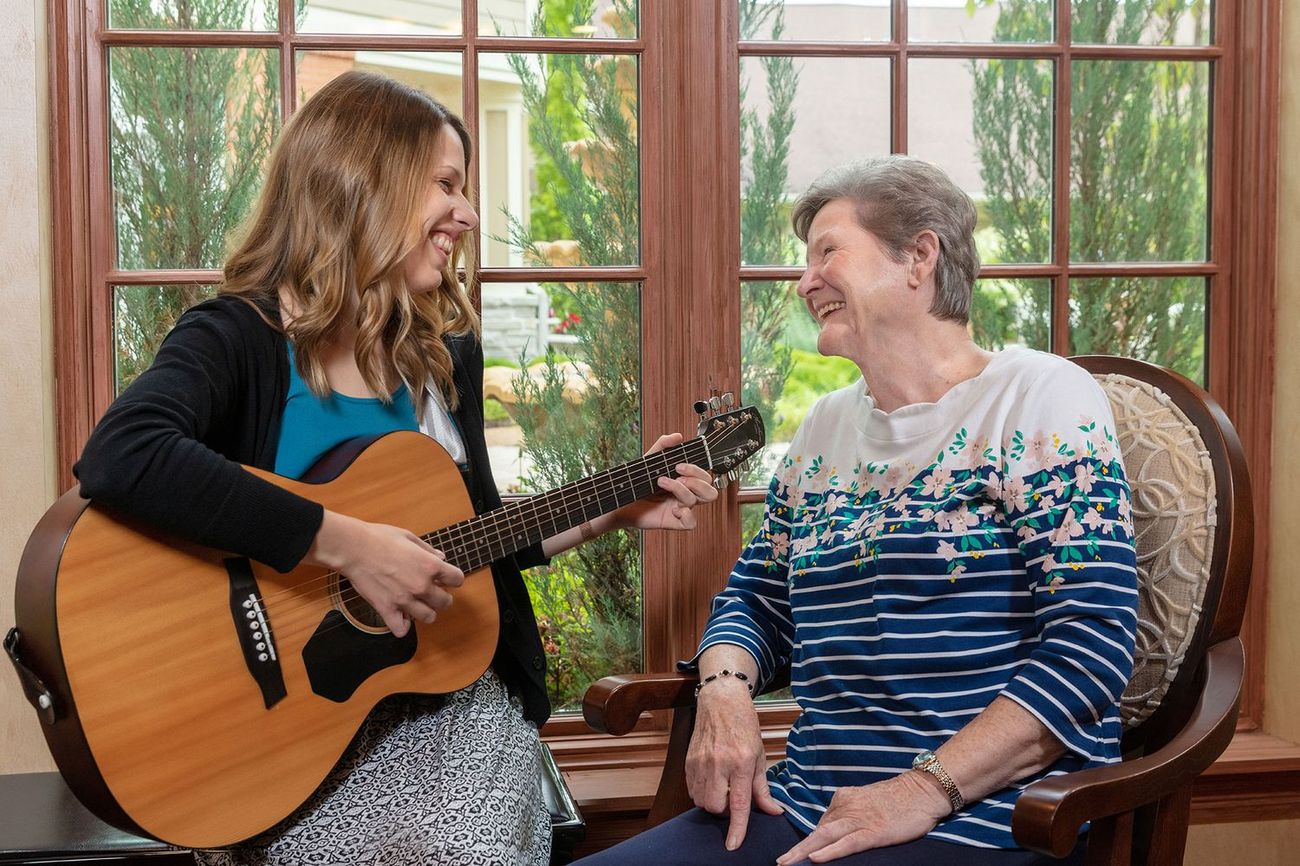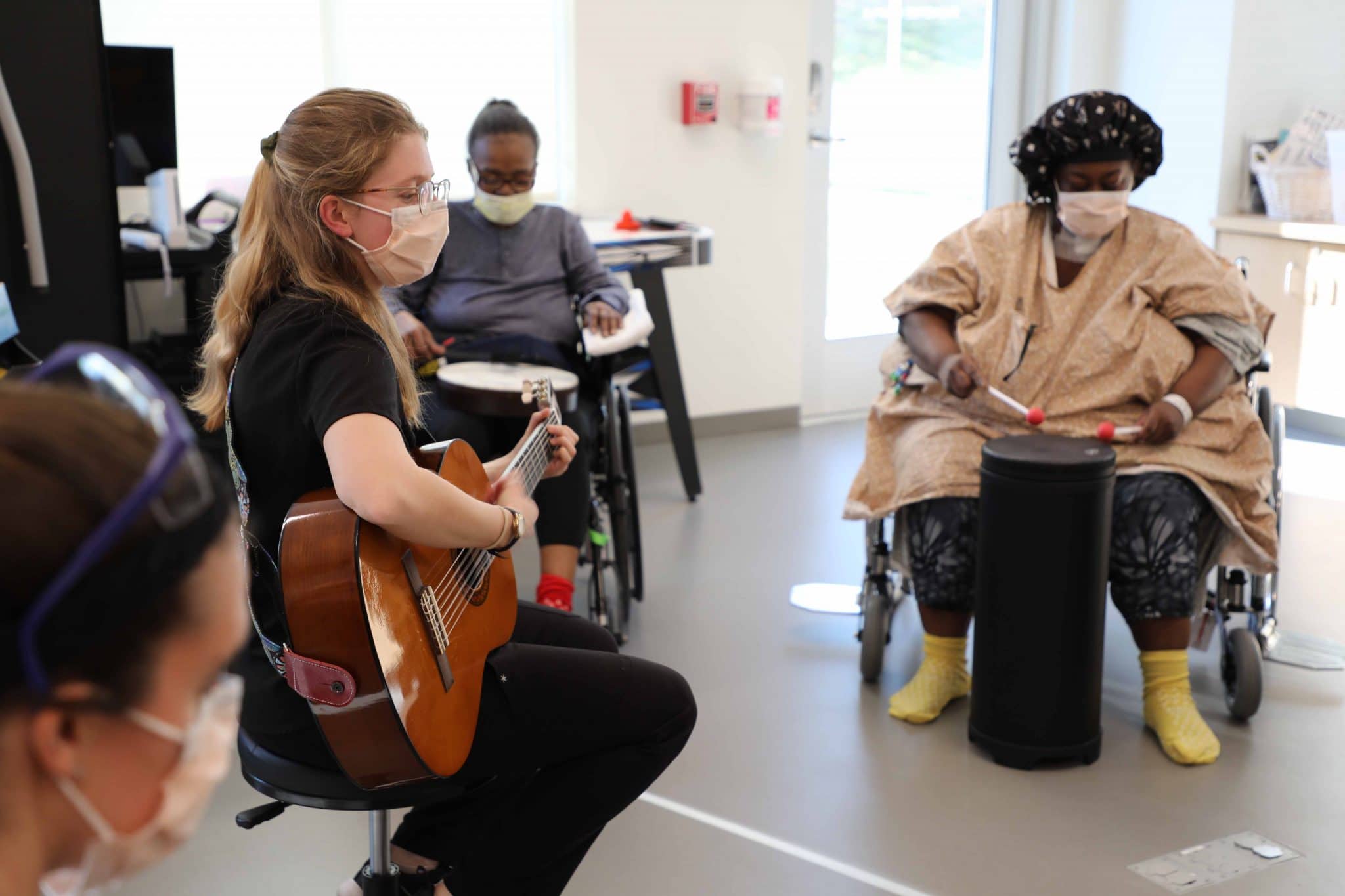Home>Events & Info>Music Therapy>Why Do Babies Get Music Therapy


Music Therapy
Why Do Babies Get Music Therapy
Published: February 1, 2024
Discover the benefits of music therapy for babies and learn why it is a valuable tool for their development and well-being. Enhance their cognitive and emotional growth through the power of music.
(Many of the links in this article redirect to a specific reviewed product. Your purchase of these products through affiliate links helps to generate commission for AudioLover.com, at no extra cost. Learn more)
Table of Contents
- Introduction
- The Benefits of Music Therapy for Babies
- How Music Therapy Supports Cognitive Development
- The Role of Music Therapy in Emotional Regulation for Babies
- Music Therapy as a Tool for Bonding and Communication
- The Impact of Music Therapy on Physical Development in Babies
- Incorporating Music Therapy Techniques at Home
- Conclusion
Introduction
Music therapy is an incredible way to connect with and stimulate individuals of all ages. From improving mental health to enhancing cognitive abilities, it has proven to be effective in various therapeutic settings. But have you ever wondered if music therapy can also be beneficial for babies?
Yes, indeed! Music therapy is not limited to adults; it can have a profound impact on babies’ development as well. The soothing melodies, rhythmic patterns, and gentle vibrations of music create a nurturing environment that promotes growth and well-being.
In this article, we will explore the benefits of music therapy for babies and how it supports their cognitive, emotional, and physical development. We will also discuss practical ways to incorporate music therapy techniques into your baby’s daily routine.
So, whether you’re a parent, caregiver, or simply interested in understanding the power of music therapy, let’s dive into the fascinating world of how music can positively influence the littlest of humans.
The Benefits of Music Therapy for Babies
Music therapy offers numerous benefits for babies, fostering their development in various areas. Let’s explore some of the key advantages:
- Enhanced cognitive development: Engaging with music stimulates different regions of the brain, promoting cognitive abilities such as memory, attention, and problem-solving skills. The repetitive patterns and melodies in music help babies improve their auditory processing and language development, laying a strong foundation for future learning.
- Emotional regulation: Music has a powerful effect on our emotions, and the same applies to babies. Listening to soothing melodies or lullabies can help calm a fussy baby, reduce stress, and promote relaxation. Music therapy can also assist babies in expressing and processing their emotions, giving them a healthy outlet for self-expression.
- Bonding and communication: Sharing musical experiences with your baby can deepen the parent-child bond. Singing, playing instruments, or even dancing together create moments of connection and joy. Music also serves as a non-verbal form of communication, enabling babies to express themselves and understand others’ emotions.
- Physical development: Music therapy can support the physical development of babies. The rhythmic patterns and melodic movements of music can help enhance their coordination and motor skills. For instance, clapping or tapping along to music can improve their hand-eye coordination, while dancing to the beat can strengthen their gross motor skills.
- Stimulation of sensory and perceptual experiences: Music engages multiple senses simultaneously, providing babies with rich sensory experiences. The different tones, tempos, and textures in music expose babies to a variety of sounds and stimulate their auditory perception. This exposure helps them develop a greater sensitivity to sounds in their environment.
Overall, music therapy for babies creates an enriching and nurturing environment that supports their development in various domains. It not only stimulates their cognitive abilities but also helps with emotional regulation, bonding, physical development, and sensory experiences.
Now that we have explored the benefits of music therapy for babies, let’s delve into how it specifically supports their cognitive development.
How Music Therapy Supports Cognitive Development
Music therapy plays a crucial role in stimulating and promoting cognitive development in babies. Let’s take a closer look at how it achieves this:
Language development: Music provides an ideal platform for language learning. Babies are naturally drawn to the rhythmic patterns, melodic contours, and repetition found in music. By exposing babies to various songs and melodies, music therapy helps develop their listening skills and phonological awareness, laying the foundation for language acquisition.
Memory and attention: Engaging with music exercises the brain’s memory and attention systems. Babies learn to anticipate and remember specific musical patterns and sequences, which enhances their memory skills. Moreover, music captures their attention, helping them develop focus and concentration as they actively listen to different elements of the music.
Cognitive flexibility and problem-solving: Music therapy encourages babies to think flexibly and adapt to different musical structures and elements. They learn to distinguish between high and low tones, fast and slow rhythms, and loud and soft dynamics. These experiences contribute to the development of cognitive flexibility and problem-solving abilities as babies explore and make sense of the diverse musical patterns.
Mathematical thinking: Music is inherently mathematical, with rhythmic patterns and sequences forming the basis of musical compositions. Babies exposed to music therapy develop an intuitive sense of rhythm, timing, and mathematical relationships within music. This early exposure to mathematical thinking can have a positive impact on their later mathematical abilities.
Executive functioning: Music therapy engages the executive functioning skills of babies, including planning, organizing, and self-regulation. The structured nature of music, with its predictable patterns and sequences, allows babies to practice these executive functions in a playful and enjoyable way, building essential skills for future cognitive development.
Incorporating music therapy into a baby’s routine can have profound effects on their cognitive development. By utilizing the power of music to enhance language skills, memory, attention, cognitive flexibility, mathematical thinking, and executive functioning, music therapy provides a strong foundation for overall cognitive growth.
Now that we have explored how music therapy supports cognitive development, let’s turn our attention to its role in emotional regulation for babies.
The Role of Music Therapy in Emotional Regulation for Babies
Emotional regulation is an important skill that allows babies to manage and express their emotions in a healthy way. Music therapy can play a significant role in helping babies develop emotional regulation skills. Here’s how:
Creating a calming environment: Music has a direct impact on our emotions. By playing soothing and gentle melodies, music therapy creates a calm and comforting environment for babies. The rhythmic patterns and soothing tones help regulate their heart rate and breathing, promoting relaxation and reducing stress.
Expressing emotions through music: Babies often have difficulty expressing their emotions verbally. Music provides a powerful non-verbal medium through which they can express their emotions. Whether it’s a happy giggle or a cry of frustration, babies can use music to communicate their feelings and release pent-up emotions.
Establishing routines and predictability: Consistency and predictability are crucial for a baby’s emotional well-being. Music therapy can be incorporated into daily routines, such as playing a specific song during bedtime or using certain tunes to signal transitions. These familiar musical cues help babies anticipate and understand what comes next, providing a sense of security and stability.
Providing a sensory experience: Music engages multiple senses, creating a rich and sensory experience for babies. This sensory stimulation helps distract babies from negative emotions or discomfort, allowing them to shift their focus and regulate their emotions more effectively.
Encouraging self-soothing: Music can serve as a powerful tool for self-soothing. Babies can learn to calm themselves by listening to soothing music or using simple instruments to create their own calming sounds. This self-soothing ability can be particularly helpful during moments of distress or when preparing for sleep.
Facilitating emotional connection and bonding: Sharing musical experiences with caregivers promotes emotional connection and bonding. Singing lullabies or participating in interactive music activities together strengthens the caregiver-baby relationship. This secure attachment provides a foundation for emotional well-being and supports emotional regulation in babies.
Music therapy serves as a valuable tool in helping babies develop emotional regulation skills. By creating a calming environment, providing a means to express emotions, establishing routines, offering sensory experiences, facilitating self-soothing, and fostering emotional connection, music therapy supports babies in understanding and managing their emotions effectively.
Now that we have explored the role of music therapy in emotional regulation, let’s discover how it can be used as a tool for bonding and communication with babies.
Music Therapy as a Tool for Bonding and Communication
Music has the remarkable ability to bring people together, and this holds true for babies as well. Music therapy acts as a powerful tool for bonding and communication between caregivers and babies. Here’s how:
Capturing attention and establishing connection: The rhythmic patterns, melodies, and gentle vibrations of music capture a baby’s attention and create a shared focus. Caregivers can use music to connect with their baby by singing, incorporating gentle movements, and making eye contact. This shared experience helps strengthen the bond between caregiver and baby.
Non-verbal communication: For babies who have not yet developed language skills, music provides a non-verbal mode of communication. Caregivers can convey emotions and messages through the tone, tempo, and expression of their singing. Similarly, babies can respond to music and express their feelings through cooing, gurgling, or even simple hand movements.
Synchronizing movements: Incorporating movement and gestures while engaging in music therapy synchronizes the movements between the caregiver and the baby. This synchronized movement not only enhances the bonding experience but also promotes a sense of security and trust between them.
Creating a nurturing environment: Soft melodies, lullabies, and gentle rhythmic sounds create a nurturing environment that calms and reassures babies. By creating this safe and comforting space, caregivers can build a sense of security and strengthen the bond with their baby.
Promoting social interaction: Music therapy in group settings allows babies to interact with and observe other babies and caregivers. This social interaction fosters a sense of belonging, encourages turn-taking, and develops social skills from an early age. Group music therapy sessions can be an enjoyable and enriching experience for both babies and caregivers.
Encouraging reciprocal communication: Music therapy provides opportunities for back-and-forth interaction between caregivers and babies. By pausing during a song or imitating the baby’s vocalizations, caregivers promote turn-taking and reciprocity in communication. This interactive element strengthens the bond and encourages communication development.
Music therapy serves as a powerful tool for bonding and communication between caregivers and babies. By capturing attention, facilitating non-verbal communication, synchronizing movements, creating a nurturing environment, promoting social interaction, and encouraging reciprocal communication, music therapy enhances the caregiver-baby relationship and establishes a strong foundation for communication and bonding.
Now that we have explored how music therapy can be used as a tool for bonding and communication, let’s delve into the impact of music therapy on the physical development of babies.
The Impact of Music Therapy on Physical Development in Babies
Music therapy goes beyond just the cognitive and emotional aspects of development and also has a positive impact on the physical development of babies. Let’s explore the ways in which music therapy promotes their physical growth:
Gross motor skills: Music therapy encourages babies to move and explore their environment. The rhythmic patterns and beats of music provide a natural inclination for babies to sway, bounce, or even dance. These movements help develop their gross motor skills, including balance, coordination, and strength in their muscles.
Fine motor skills: Engaging in music therapy often involves using instruments or objects that require babies to manipulate and grasp. Whether it’s shaking a rattle or tapping drums, these actions improve their hand-eye coordination and strengthen their fine motor skills. Babies also develop finger dexterity as they experiment with different sounds and movements.
Balance and spatial awareness: Rhythmic movements in music can assist babies in developing a sense of spatial awareness and balance. As they sway, clap, or move in response to the music, they become more attuned to their body position in space, improving their overall balance and coordination.
Sensory integration: Music engages multiple senses simultaneously. Incorporating sensory elements in music therapy, such as using textured instruments or exploring different musical sounds, stimulates babies’ sensory integration. This integration helps them process and interpret sensory information more effectively, contributing to their overall physical development.
Body awareness and control: Through music therapy, babies become more aware of their bodies and gain better control over their movements. As they explore different ways to move, coordinate their limbs, or mimic actions in response to the music, they develop body awareness and enhance their ability to control their movements.
Speech and language development: Music therapy can also support the development of oral motor skills necessary for speech and language. Through singing and vocalizations, babies strengthen the muscles involved in speech production, improving their articulation and verbal communication abilities.
By incorporating music therapy into their routine, caregivers can positively impact the physical development of babies. Engaging in rhythmic movements, stimulating fine and gross motor skills, promoting balance and spatial awareness, enhancing sensory integration, developing body awareness and control, and supporting speech and language development, music therapy provides a holistic approach to physical growth.
Now that we have explored the impact of music therapy on physical development, let’s discuss how caregivers can incorporate music therapy techniques at home.
Incorporating Music Therapy Techniques at Home
Music therapy techniques can be easily incorporated into your daily routine at home, providing numerous benefits for your baby’s development. Here are some practical ways to integrate music therapy into your home environment:
- Singing: Singing to your baby is one of the simplest and most effective ways to engage in music therapy at home. Sing lullabies, nursery rhymes, or even make up your own songs. Your baby will respond to the melodic patterns and the familiar sound of your voice, strengthening the bond between you.
- Movement and dancing: Encourage your baby to move and dance along to music. Hold your baby’s hands and gently sway or bounce together. You can also create a safe space for your baby to explore movement independently by providing soft surfaces and playing music that encourages movement.
- Instrument play: Introduce your baby to simple instruments such as rattles, drums, or shakers. Allow them to explore the sounds and textures of these instruments, promoting sensory integration and fine motor skills. You can play instruments together or show your baby how to create different sounds.
- Musical games: Engage in interactive musical games with your baby. For example, you can mimic their vocalizations or movements and then allow them to imitate you. This turn-taking activity supports social development while creating a fun and engaging musical experience.
- Musical storytelling: Use music as a backdrop for storytelling. Choose a calming, instrumental piece of music and create a story by narrating the events as the music plays. This activity enhances your baby’s listening skills and stimulates their imagination.
- Musical bath time: Turn bath time into a musical experience by singing songs or playing soft music in the background. Experiment with different rhythms and melodies, making bath time an enjoyable sensory experience for your baby.
- Musical routine: Incorporate music into daily routines, such as playing gentle music during nap time or bedtime. Using consistent songs or melodies for specific activities can help cue your baby to transition from one routine to another.
Remember, the key is to create a nurturing and engaging musical environment at home that supports your baby’s development. Be attuned to their responses and adapt the activities based on their preferences and comfort levels. Music therapy at home should be a joyful experience that promotes bonding, communication, and overall well-being for your baby.
Now that we have explored practical ways to incorporate music therapy techniques at home, let’s summarize the key points discussed in this article.
Conclusion
Music therapy is a powerful tool that offers numerous benefits for babies’ development. From supporting cognitive growth to enhancing emotional regulation, bonding, and physical development, music therapy provides a holistic approach to nurturing the youngest members of our society.
Through music, babies develop language skills, memory, attention, cognitive flexibility, mathematical thinking, and executive functioning. Music therapy creates a calming environment, helps babies express their emotions, establishes strong bonds, and promotes effective communication. It also enhances gross and fine motor skills, balance, spatial awareness, sensory integration, body control, and oral motor skills necessary for speech and language development.
By incorporating music therapy techniques at home, caregivers can further support their baby’s development. Singing, movement and dancing, instrument play, musical games, storytelling, and incorporating music into daily routines are practical ways to engage in music therapy with your baby.
Remember, each baby is unique, and it’s important to tune in to their individual preferences and comfort levels during music therapy activities. The goal is to create a nurturing and enjoyable musical environment that promotes bonding, communication, and overall well-being.
So, whether you’re singing a lullaby, dancing to a catchy beat, or playing simple instruments together, let the power of music therapy enrich your baby’s journey of growth and development for a lifetime.











